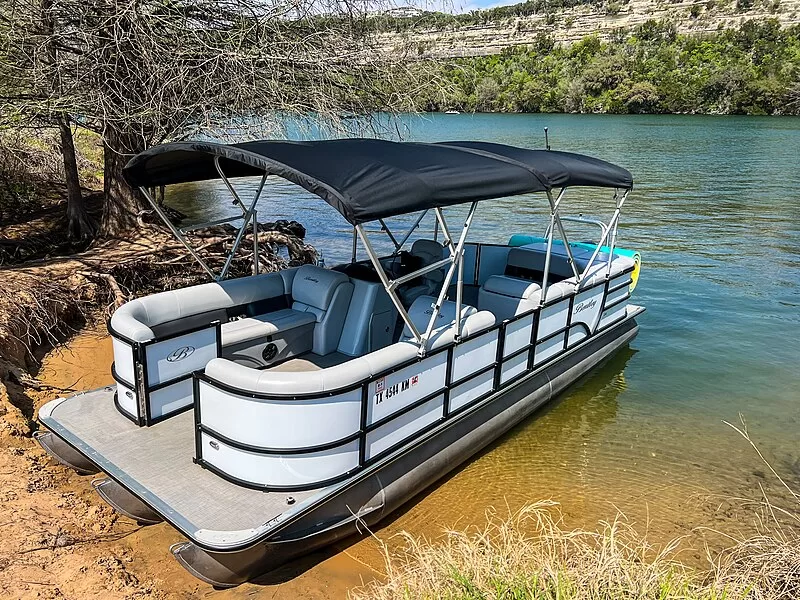How do mono, fluoro, and braid stack up?
Your fishing line is a critical part of your fishing gear and rod rig. I’m sure all of you have hooked up with a quality fish only to have your line SNAP — I know I sure have on many different occasions (and I remember them all too well). To prevent this from happening, its always wise to check your line regularly and use a quality fishing line.
If you’ve ever walked down the tackle aisle of the big box stores, you’ll know that there are literally hundreds of different fishing line options available to you. You’ve probably asked yourself, “Which one is best?” or “Which should I get?”. That is a loaded question, since it really depends upon your tackle and how you plan to fish it.
The 3 main types of fishing line include:
- Monofiliment (mono)
- Fluorocarbon (fluoro)
- Braid
In this article, we break down the pros and cons of each type and help explain how to use them.
Monofiliment
“Mono” is just a shortened and fancy way of saying “single thread”. Meaning, this type of fishing line is just a single strand of plastic (usually nylon) that is stretched out and extruded through a thin tube and spooled up. Mono has been around for almost a century; it may not be the latest in technology, but it’s old faithful in terms of reliability. Easily the most popular fishing line on the market today.

Pros
- Cheap
- Easy to use
- Casts smoothly
- Holds knots better than most lines
- Relatively low memory
- Recyclable
Cons
- A lot of stretch
- Buoyant, bad for bottom baits
- Short lifespan
- Short casting distance
- Weaker than other line types (assuming the same line diameter)
When to Use Mono
This line is perfect for beginners. If you are just getting into fishing, I highly suggest you start with mono. It’s cheap, easy to find, and functions reasonably well on most rod/reel combinations. If you plan on targeting your basic game fish–smallmouth, largemouth, perch–mono will suit you just fine. However, if you plan on targeting tougher-mouthed species you should consider switching to something else.
Fluorocarbon
Fluoro line is made the same way as mono but is made from a different (denser) material. In fact, it’s made from the same material that stops stuff from sticking to your frying pans–teflon–mixed with the refrigerant that keeps your freeze cold–freon. Fluoro is a newer fishing line choice that was introduced about 50 years ago. Back then, it was used primarily as leaders due to how stiff it was, but things have come a LONG way since then.

Pros
- Practically invisible underwater
- Abrasion resistant
- Longer life than mono
- High shock strength
- Extremely sensitive
Cons
- Stretches under pressure
- Knots tend to fail more
- Better suited for baitcasters as opposed to spinning reels
When to Use Fluoro
Fluorocarbon sinks fast, so you’ll mainly want to use it with bottom rigs like jigs and dropshots. Since it is practically invisible underwater, as you may have guessed, its primary use is for fishing in very clear water. While fluoro can be used as your main line, many people use it as a leader instead by attaching a few feet of fluoro to their main line, before the hook, to throw off sight-based predators like pike.
Braid
This extremely high priced fishing line is the newest to the market. It’s high price can be justified though. Braid offers much higher tensile line strength at a much smaller line diameter. For example, you can buy 20lb test Power Pro braided fishing line at a diameter of .009” which is equivalent to 6lb mono at the same diameter. Big difference–you can fit the same amount of braid on your fishing line and have a much higher pound-test. Braid is made from weaving together several strands of polyethylenes which produces a super-thin line that could stop a monster Striper in its tracks.

Pros
- No memory
- No stretch, extremely sensitive
- Strong line strength
- Low profile, low diameter
Cons
- Expensive!!! $$$
- Easy to see underwater, highly visible
- Hard to tie knots with
- Hard to cut
- Backlashes are a total pain!
When to Use Braid
Braid is perfect if you’re fishing in low-visibility waters or need a lot of high-strength line on your spool. It’s great for fishing all depths–shallow or deep. It’s also great for working weeds and heavy vegetation as it will slice right through rather than getting caught up and breaking off. You’ll normally fish braid on spinning reels but it can also be spooled onto your baitcaster (as long as it’s good quality). Braid can bite into itself and equipment as it is VERY thin and VERY sharp. Watch your hands and fingers when working with braid; it could slice right through you.
Whether you choose mono, fluoro, or braid… know that there is no “best fishing line” for every occasion. Each situation will present itself with pros and cons to each type of line. Clear water? Use mono. Targeting big game species? Use fluoro or braid. It’s also about personal preference. Every angler fishes differently and is comfortable with different knots. You really need to get out there and experiment with the different line types to find what gives you the most confidence.



